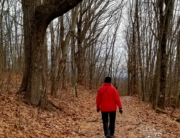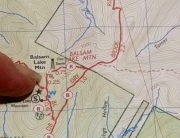ON DISPLAY in Morgan Outdoors’ Catskill Park Room
(Feb. 21 through April 10)
Sponsored by John Burroughs’ Woodchuck Lodge, Roxbury, NY. www.woodchucklodge.org
The ten-panel exhibit is a lament for a bird that once darkened the skies over our region, but which was hunted to extinction within the lifetime of the Roxbury-born naturalist (1837-1921).
Developed and designed by the Chicago Museum of Science and its Peggy Notebaert Nature Museum, includes a locally-produced panel about John Burroughs and his sightings of and comments on this amazing bird.
In the year 1800, more than five billion passenger pigeons crisscrossed the skies of the eastern United States and Canada. The species occurred only in North America, primarily east of the Rocky Mountains, and bred almost exclusively in the eastern deciduous forest.
Passing flocks could darken the skies for three days straight. The beats of their wings would create drafts that chilled the people over whom they flew.
However, in the face of relentless slaughter for food and recreation, coupled with habitat loss, this seemingly inexhaustible resource was depleted in just a few decades. By 1900 the species was virtually extinct, and on the afternoon of September 1, 1914, Martha, the last of her species, died in the Cincinnati Zoo.
For more information on the passenger pigeon, its life, demise and legacy, visit www.passengerpigeon.org.
RELATED PROGRAM:
Saturday, March 7th at 4:00pm “Birds of the Bashakill”
A presentation by Sullivan County Audubon member Lance Verderame offering a season by season account of the incredible bird life of the nearby Bashakill Wildlife Management Area, the largest freshwater marsh in southern New York, just south of Wurtsboro.
Lance will explore why this is one of the premier birding locations in the state and the best in Sullivan County.
John Haas, author of “A Birding Guide To: Sullivan County New York” will join Lance for a question and answer session. John’s book will be on sale at the event and all proceeds will go directly to the BashaKill Area Association.






Recent Comments